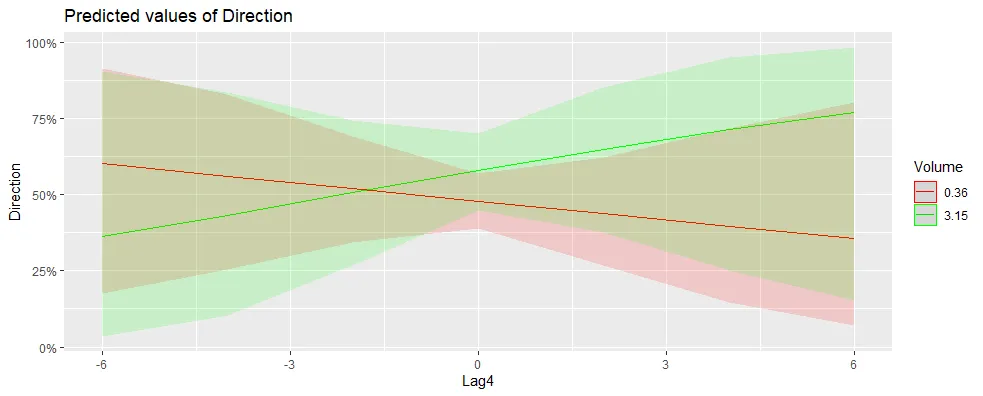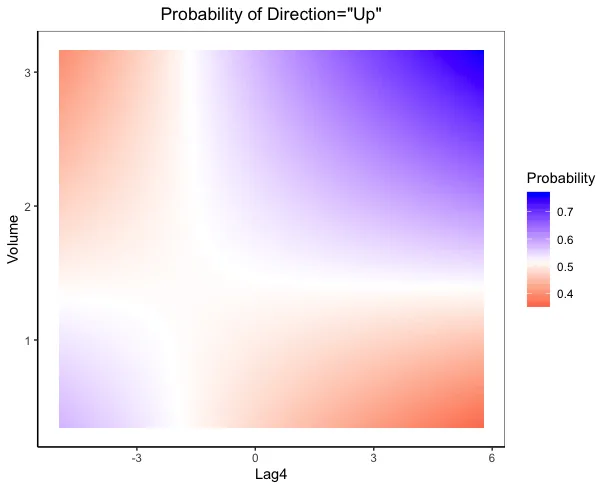1个回答
2
交互作用发生在两个连续变量之间。该图使用
上面的图表代表了下面热力图中等值线的
Lag4 作为 x 轴变量,然后选择一些 Volume 的值来展示在不同 Volume 值下,Direction 和 Lag4 之间的关系如何变化。默认情况下,选择 Volume 的最小值和最大值。您可以使用 mdrt.values 参数来显示 Volume 的中位数和四分位数或 Volume 的均值和标准差(请参阅帮助以获取其他选项)。例如:theme_set(theme_classic()) # Set ggplot theme
plot_model(m1, type="int", colors=rainbow(3), mdrt.values="quart")
plot_model(m1, type="int", colors=rainbow(3), mdrt.values="meansd")
# Create grid of Lag1 and Volume values for prediction
pred.dat = expand.grid(Lag1 = median(Smarket$Lag1),
Lag4 = seq(min(Smarket$Lag4), max(Smarket$Lag4), length=100),
Volume = seq(min(Smarket$Volume), max(Smarket$Volume), length=100))
# Add predictions
pred.dat$Direction = predict(m1, newdata=pred.dat, type="response")
# Plot heatmap
ggplot(pred.dat, aes(Lag4, Volume, fill=Direction)) +
geom_tile() +
scale_fill_gradient2(low="red", mid="white", high="blue",
midpoint=median(pred.dat$Direction)) +
labs(title='Probability of Direction="Up"',
fill="Probability")
上面的图表代表了下面热力图中等值线的
Volume。例如,当Volume为1.12(上图左侧的红线)时,您可以在下面的热力图中看到颜色从蓝色变为白色再到红色,表示随着Lag4的增加,Direction="Up"的概率逐渐减小,就像我们在上面的图中看到的一样。
- eipi10
网页内容由stack overflow 提供, 点击上面的可以查看英文原文,
原文链接
原文链接


